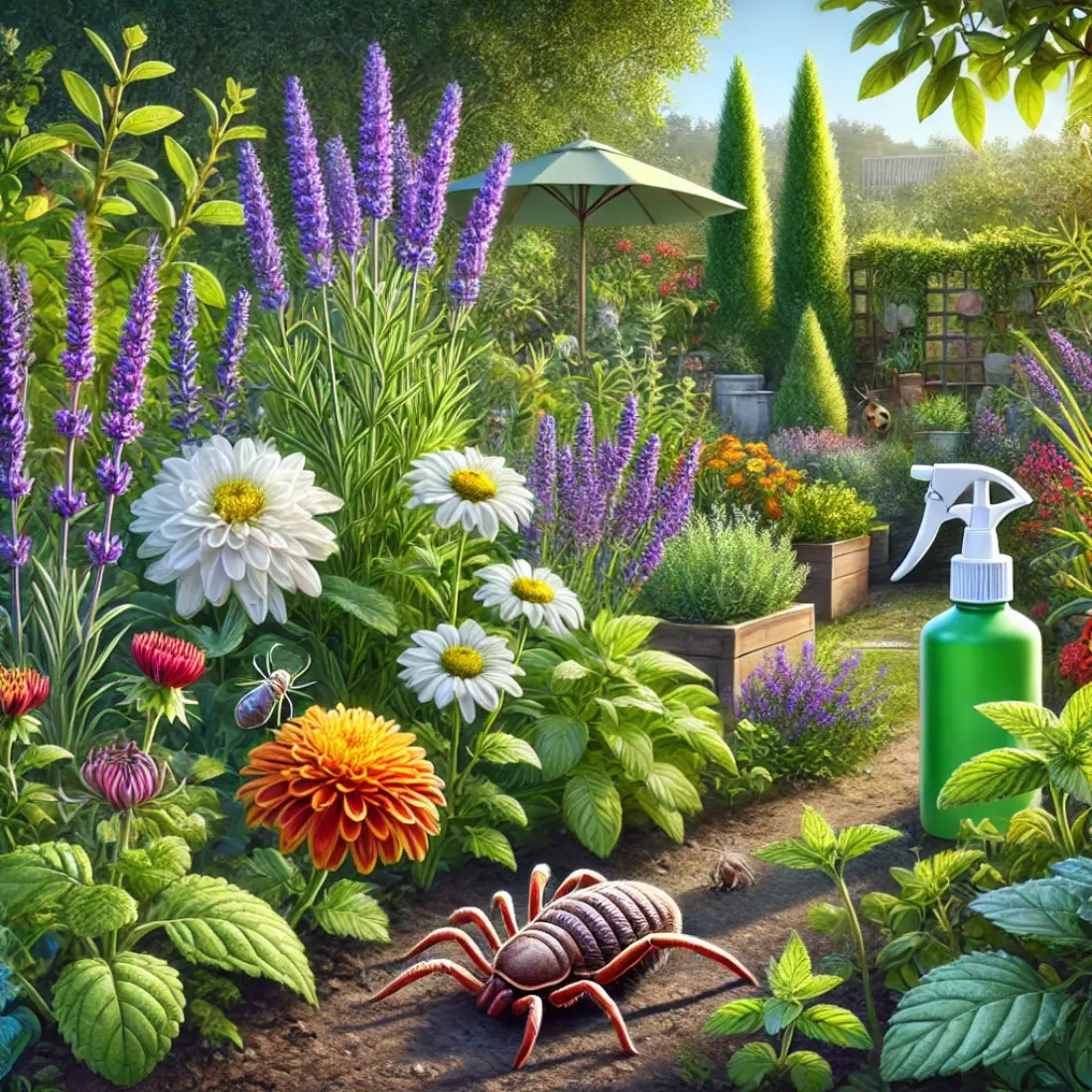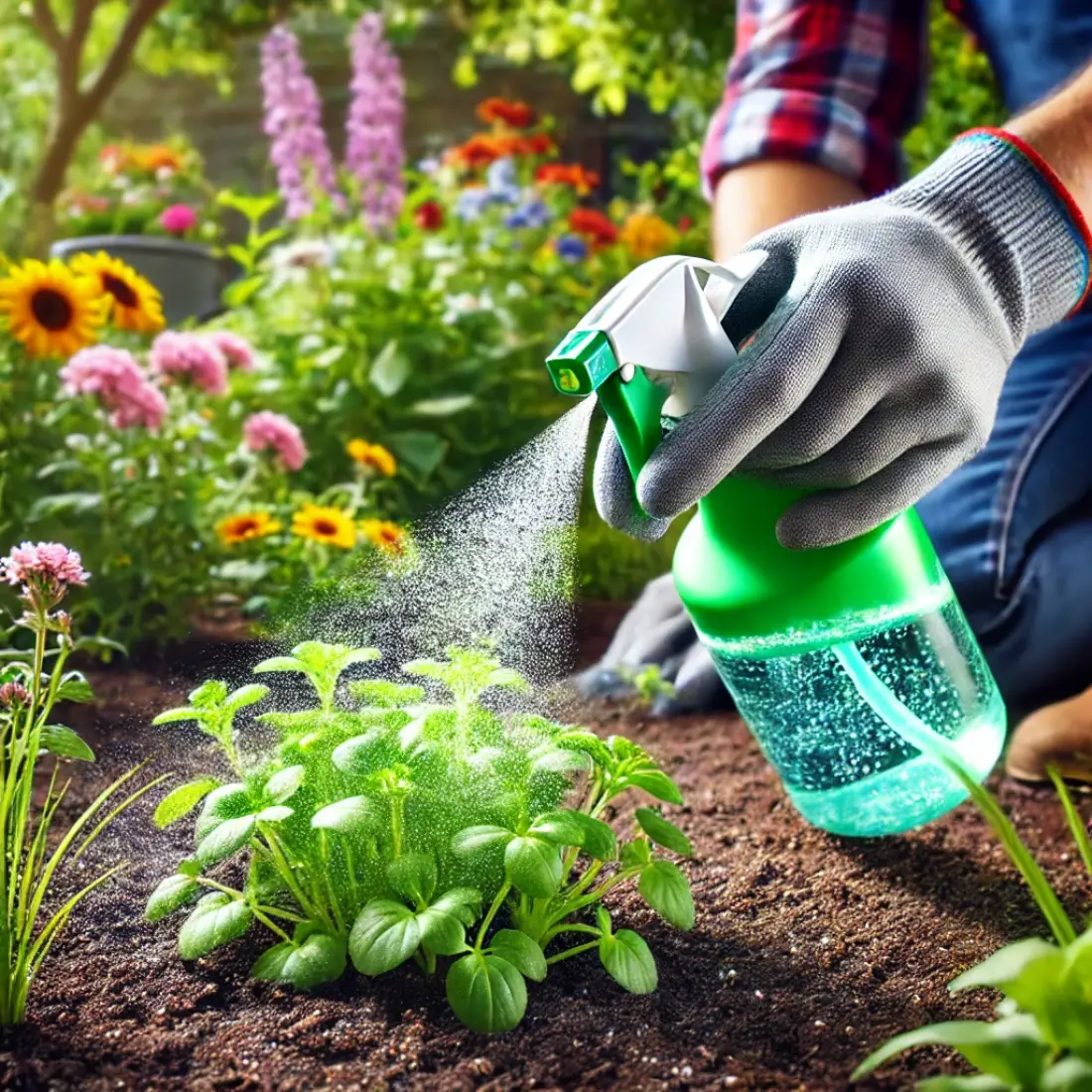Growing ginger organically offers numerous advantages for both your health and the environment. Organic ginger is free from harmful pesticides and synthetic fertilizers, making it safer to consume and better for your overall health. It retains more nutrients and has a richer, more robust flavor compared to conventionally grown ginger.
Yet, many people shy away from growing their own ginger, thinking it’s too complicated. This guide demystifies the process, showing you step-by-step how to cultivate this amazing plant using organic practices.
- Healthier Produce: Growing ginger organically ensures that you avoid harmful chemicals, resulting in a healthier and safer product for consumption.
- Better Taste: Organic ginger often has a more intense flavor and better nutritional value compared to conventionally grown ginger.
- Environmental Sustainability: Organic practices help maintain soil health, reduce pollution, and support biodiversity, making your gardening efforts environmentally friendly.
- Cost-Effective: Growing your own ginger can be more economical in the long run, reducing the need to purchase this often expensive spice.
Ginger: Benefits, Uses, and History
Ginger (Zingiber officinale) is a flowering plant whose rhizome, commonly referred to as ginger root, is widely used as a spice and a medicinal herb. Originating from Southeast Asia, ginger belongs to the Zingiberaceae family, which also includes turmeric and cardamom. The plant itself grows to about three to four feet tall and produces clusters of white and pink flower buds that bloom into yellow flowers.
Historically, ginger has been cherished for its culinary and medicinal properties for thousands of years. In cooking, it adds a distinctive, spicy flavor to both savory and sweet dishes. It’s a staple in Asian cuisine, but its use has spread globally, featuring in recipes ranging from curries to gingerbread.
Medicinally, ginger is renowned for its anti-inflammatory and antioxidant effects. It has been traditionally used to treat a variety of ailments, including nausea, digestive issues, and inflammation. Modern studies have supported many of these uses, highlighting ginger’s potential benefits in improving digestion, reducing muscle pain, and alleviating symptoms of colds and flu.
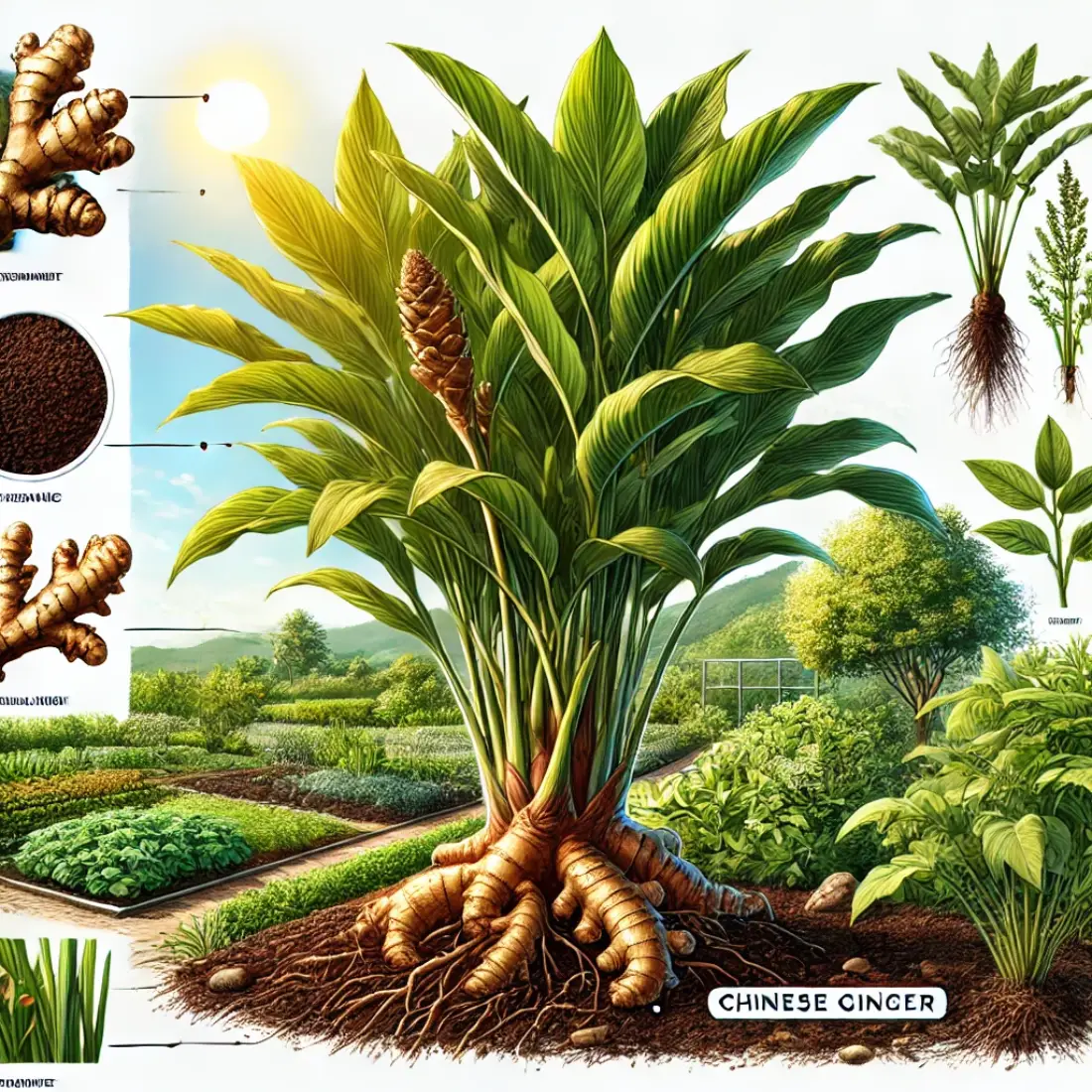
Preparing to Grow Ginger
Choosing the Right Variety: Selecting the right ginger variety is crucial for successful growth. Common varieties include Chinese ginger, which is widely available, and baby ginger, known for its milder flavor and tender rhizomes. Choose organic rhizomes to ensure healthy, chemical-free plants.
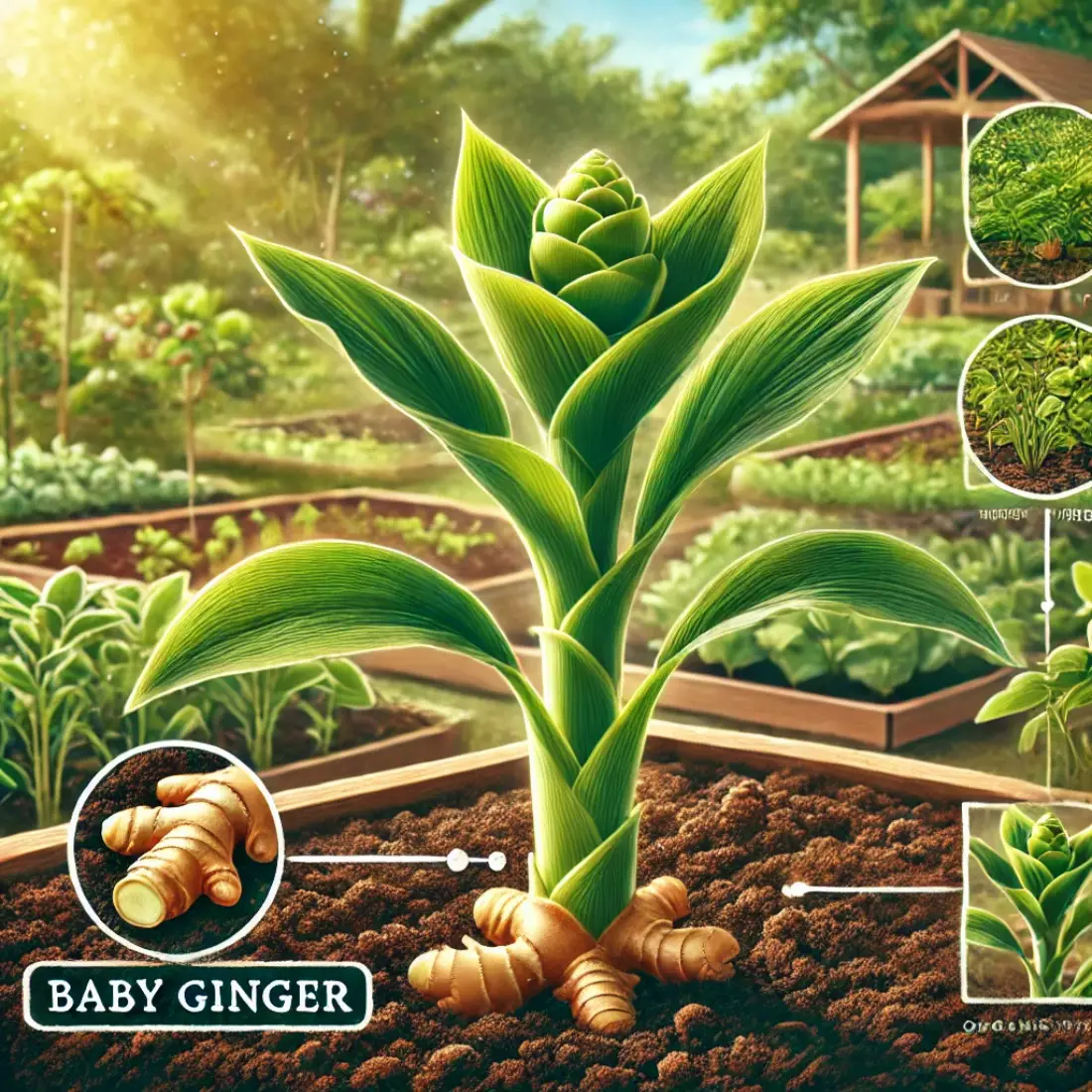
Selecting a Planting Site: Ginger thrives in warm, humid environments. Choose a location that receives partial to full sunlight, ideally with morning sun and afternoon shade. Ensure the site is sheltered from strong winds to protect the delicate plants.
Preparing the Soil: Ginger requires well-draining, loamy soil rich in organic matter. Start by loosening the soil to a depth of at least 12 inches. Incorporate organic compost or well-rotted manure to improve soil fertility and structure. Aim for a slightly acidic to neutral pH level, around 5.5 to 6.5.
Organic Soil Amendments: Enhance soil health by adding organic amendments such as worm castings, leaf mold, or coconut coir. These materials improve soil aeration, moisture retention, and nutrient availability, creating an ideal environment for ginger growth.
Creating Raised Beds or Containers: Consider growing ginger in raised beds or large containers to ensure optimal drainage and soil quality. Raised beds can be filled with a custom soil mix, while containers allow for better control over growing conditions. Ensure containers have drainage holes to prevent waterlogging.
Mulching: Apply a layer of organic mulch, such as straw or leaf mulch, to help retain soil moisture, regulate temperature, and suppress weeds. Mulching also adds organic matter to the soil as it decomposes, further enriching the growing medium.
Planting Ginger
Sourcing Ginger Rhizomes: To begin planting ginger, start with sourcing high-quality organic ginger rhizomes. Purchase from reputable nurseries, garden centers, or online suppliers that specialize in organic gardening. Ensure the rhizomes are plump, firm, and free from mold or blemishes. Rhizomes with visible eyes or buds are ideal for planting.
Cutting and Preparing Rhizomes: Before planting, cut the ginger rhizomes into smaller pieces, each with at least one or two buds or eyes. Allow the cut pieces to dry for a day or two to form a callus over the cuts, which helps prevent rot when planted.
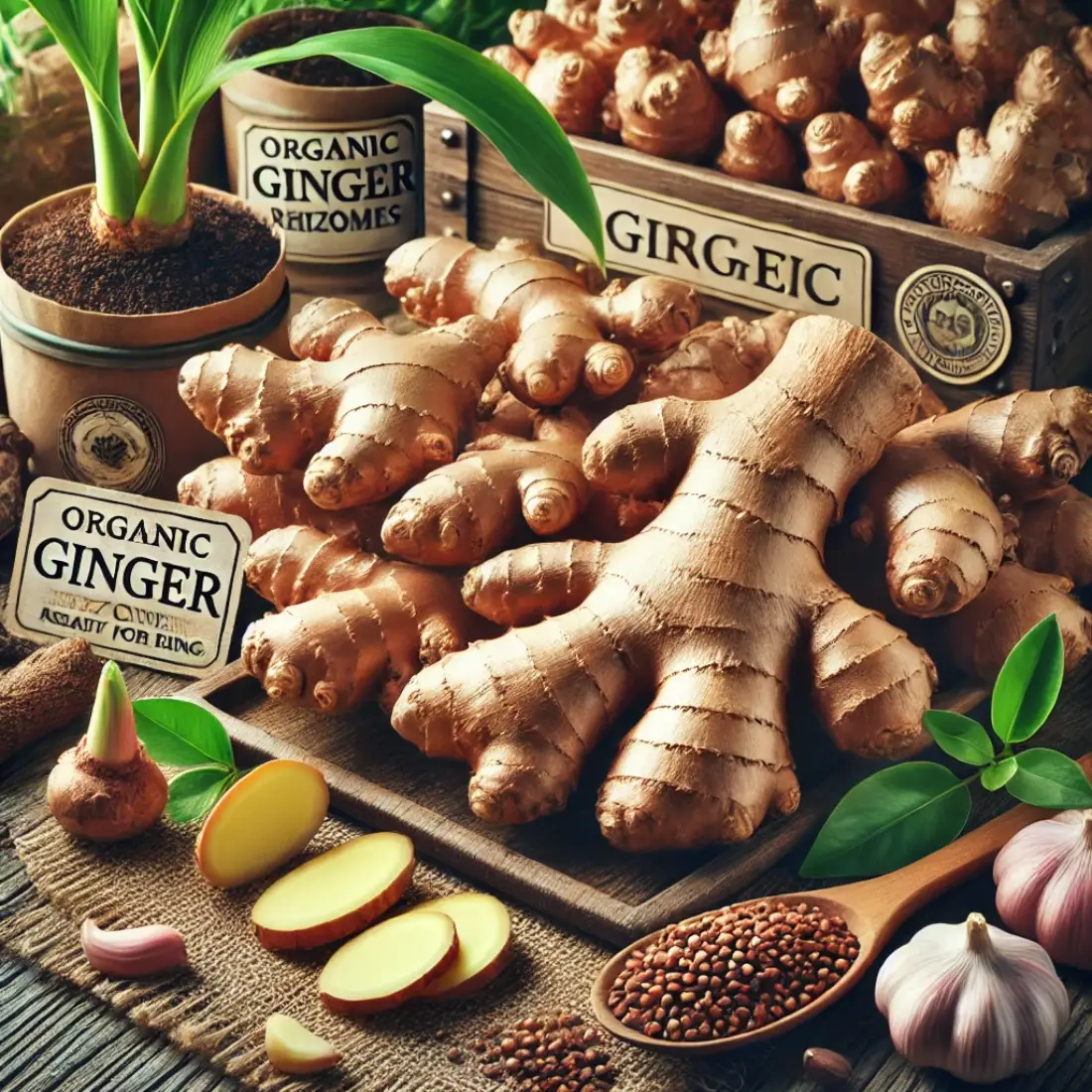
Proper Planting Depth and Spacing: Ginger prefers warm soil, so plant the rhizomes after the last frost date in your area. Choose a sunny location with well-draining soil. Dig shallow holes about 2-4 inches deep and place each rhizome piece horizontally, with the buds facing upwards. Space the rhizomes about 8 inches apart to give them room to grow.
Watering and Mulching: Water the newly planted rhizomes thoroughly, ensuring the soil is evenly moist but not waterlogged. Consistent moisture is essential for ginger to thrive, so maintain regular watering, especially during dry spells. To retain moisture and regulate soil temperature, apply a layer of organic mulch, such as straw or leaves, around the plants.
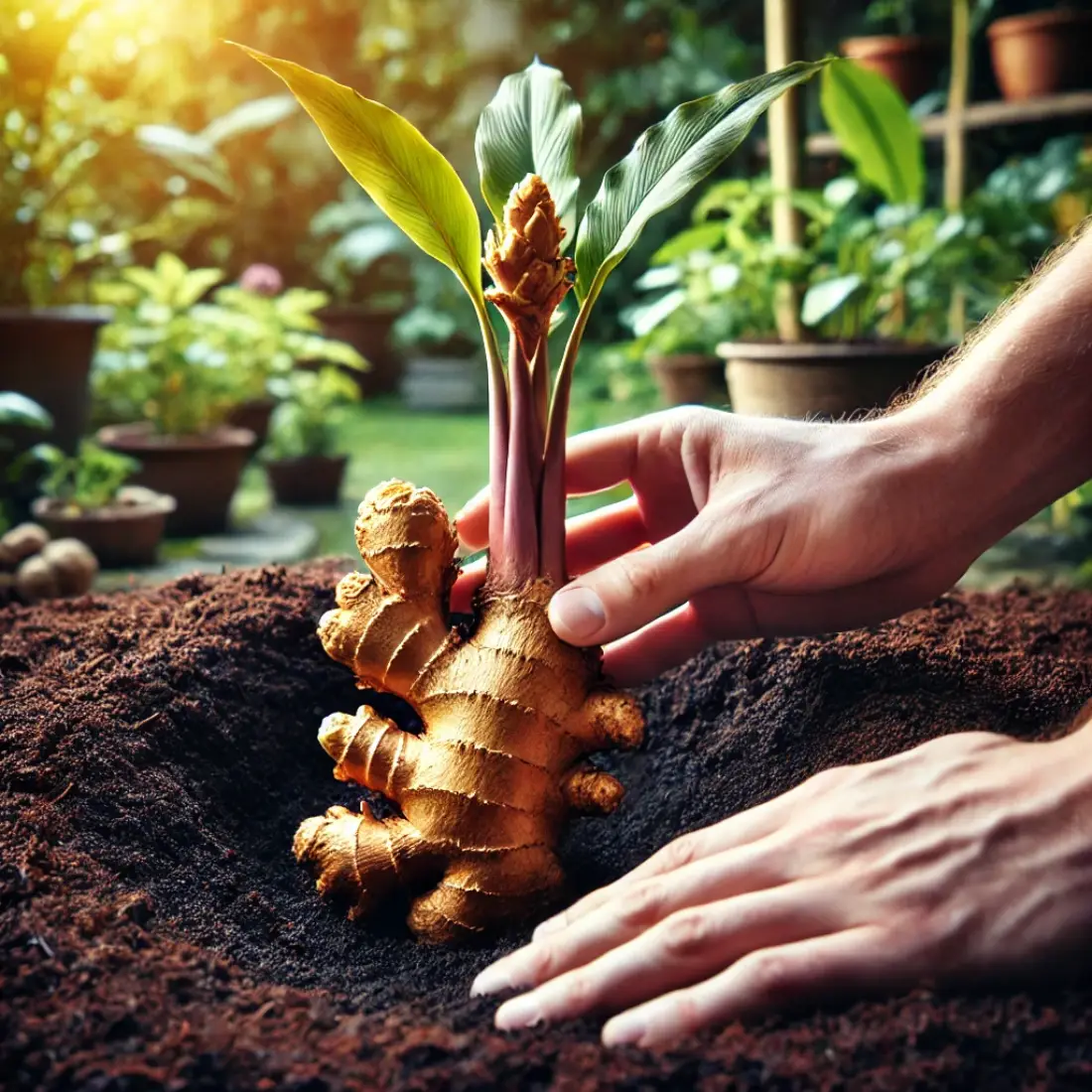
Container Planting: If you’re short on garden space or prefer more control over growing conditions, consider planting ginger in large containers. Use a pot at least 12 inches deep with drainage holes.
Fill the container with a rich, well-draining organic potting mix and plant the rhizomes as described above. Place the container in a warm, partially shaded spot and maintain consistent moisture levels.
Initial Growth and Care: Ginger typically takes a few weeks to sprout. During this time, keep the soil moist and watch for signs of growth. Once the shoots appear, continue to provide consistent watering and mulch to support healthy growth.
Caring for Ginger Plants
Watering Practices
Ginger plants require consistent moisture to thrive, but overwatering can lead to root rot. Water your ginger plants regularly, keeping the soil consistently moist but not soggy. During the growing season, ginger plants need about 1 inch of water per week.
Adjust watering frequency based on weather conditions; water more frequently during dry periods and reduce watering during rainy spells. Always water the plants early in the morning to allow any excess moisture on the leaves to evaporate by evening, preventing fungal diseases.
Fertilizing Organically
For robust growth, ginger benefits from regular feeding with organic fertilizers. Start by enriching the soil with compost or well-rotted manure before planting. During the growing season, apply a balanced organic fertilizer, such as fish emulsion or seaweed extract, every 4-6 weeks.
Alternatively, use compost tea, which provides a gentle, steady supply of nutrients. Focus on high-phosphorus fertilizers to encourage strong root development. Avoid synthetic fertilizers, as they can damage the soil microbiome and affect the plant’s natural growth cycle.
Weed and Pest Control
Weeds can compete with ginger for nutrients and water, so it’s essential to keep the planting area weed-free. Mulching helps suppress weeds, but regular hand weeding may also be necessary. When it comes to pests, ginger plants are relatively hardy but can still fall victim to common garden pests like aphids, spider mites, and root-knot nematodes.
Employ organic pest control methods, such as introducing beneficial insects like ladybugs and predatory mites or using neem oil sprays. For nematode control, practice crop rotation and add organic matter to the soil to enhance its health.
Pruning and Maintenance
Ginger plants generally do not require extensive pruning. However, removing yellowing or damaged leaves helps to maintain plant health and prevent the spread of diseases. Trim away any dead foliage to allow the plant to focus its energy on healthy growth.
Regularly check the plants for signs of disease, such as yellowing leaves or stunted growth, and address any issues promptly. Ensuring good air circulation around the plants can help prevent fungal infections.
Seasonal Care
In regions with cooler climates, ginger may need protection from frost. As temperatures drop, consider covering the plants with a frost cloth or moving container-grown ginger indoors.
Ginger can be grown as a perennial in tropical and subtropical climates, but in colder areas, it’s often treated as an annual. At the end of the growing season, harvest the rhizomes and store them for the next planting season or bring the plants indoors to overwinter.
Common Problems and Solutions
Disease Management
Ginger plants are susceptible to several diseases, the most common being bacterial wilt, fusarium root rot, and leaf spot.
- Bacterial Wilt: This disease causes the leaves to wilt and turn yellow. To manage it, ensure proper drainage and avoid waterlogged soil. Remove and destroy affected plants to prevent the spread.
- Fusarium Root Rot: Characterized by yellowing leaves and stunted growth, fusarium root rot can be controlled by rotating crops and using disease-free planting material. Enhance soil health with organic matter to promote beneficial microorganisms.
- Leaf Spot: Brown or black spots on leaves indicate leaf spot disease. Improve air circulation by spacing plants properly and avoiding overhead watering. Remove and discard affected leaves promptly.
Pest Control
Ginger plants can be attacked by pests like aphids, spider mites, and nematodes.
- Aphids and Spider Mites: These pests can be managed using organic insecticidal soap or neem oil. Introduce beneficial insects like ladybugs to naturally control the population.
- Root-Knot Nematodes: These microscopic pests cause swollen, knotted roots. Practice crop rotation and incorporate organic matter into the soil to reduce nematode populations.
Growth Issues
Several factors can contribute to poor growth or low yields in ginger plants.
- Slow Growth: If your ginger is growing slowly, check soil temperature and moisture levels. Ginger prefers warm, consistently moist conditions. Ensure the soil is rich in organic matter.
- Poor Yields: Poor yields can result from inadequate sunlight or nutrient deficiencies. Make sure the plants receive partial to full sunlight and feed them with organic fertilizers regularly.
Prevention and Maintenance
Maintaining good garden hygiene is essential to prevent problems. Regularly remove weeds, debris, and any diseased plant material. Rotate crops to break pest and disease cycles. Ensure proper spacing and airflow around the plants to reduce the risk of fungal diseases.
Harvesting and Storing Ginger
When to Harvest
Ginger typically takes about 8-10 months from planting to reach maturity. The best time to harvest ginger is when the leaves start to yellow and die back, indicating that the rhizomes are fully developed. In warmer climates, ginger can be harvested year-round, while in cooler regions, it’s best to harvest before the first frost.
Harvesting Techniques
To harvest ginger, carefully dig around the plant with a garden fork or spade, starting about 6-8 inches away from the stem to avoid damaging the rhizomes. Gently lift the plant from the soil and brush off any excess dirt. For a continuous harvest, you can selectively dig up portions of the rhizome and leave the rest to continue growing.
Cleaning and Preparing for Storage
After harvesting, rinse the ginger rhizomes under cool running water to remove any remaining soil. Pat them dry with a clean cloth or paper towel. If you plan to store the ginger for an extended period, allow the rhizomes to air dry completely in a well-ventilated area for a few hours to prevent mold growth.
Storing Fresh Ginger
Fresh ginger can be stored in the refrigerator for up to three weeks. Place the rhizomes in a plastic bag with a few holes punched in it to allow for air circulation, or wrap them in a paper towel and store them in the crisper drawer.
For longer storage, consider freezing the ginger. Peel the rhizomes and cut them into smaller pieces, then place them in an airtight container or freezer bag. Frozen ginger can last up to six months and can be grated directly from the freezer for use in recipes.
Long-Term Storage Options
For even longer storage, you can dry or dehydrate the ginger. Slice the rhizomes thinly and use a food dehydrator or oven set at a low temperature to dry them until they are crisp. Store dried ginger in an airtight container in a cool, dark place.
Alternatively, you can preserve ginger by making ginger paste, which can be stored in the freezer for several months, or by pickling it in vinegar for culinary uses.
FAQs about Growing Ginger
How long does it take to grow ginger?
Ginger typically takes about 8-10 months to mature from planting to harvest. In warmer climates, it can be harvested year-round, while in cooler regions, it’s best to harvest before the first frost.
Can ginger be grown indoors?
Yes, ginger can be grown indoors in containers. Use a large pot with good drainage and place it in a warm, sunny spot. Ensure the soil remains moist and provide sufficient light, ideally with a grow light if natural light is limited.
What are the best companion plants for ginger?
Good companion plants for ginger include cilantro, peppers, and tomatoes. These plants can help repel pests and enhance growth by creating a supportive growing environment.
How do I know if my ginger plant is healthy?
A healthy ginger plant will have vibrant green leaves and steady growth. Signs of an unhealthy plant include yellowing leaves, stunted growth, and signs of disease or pest infestations.
Is it possible to grow ginger from store-bought rhizomes?
Yes, you can grow ginger from store-bought rhizomes, but it’s best to use organic rhizomes to avoid chemicals that might inhibit growth. Ensure the rhizomes have visible eyes or buds before planting.
How often should I water ginger plants?
Water ginger plants regularly to keep the soil consistently moist but not waterlogged. During the growing season, aim to provide about 1 inch of water per week, adjusting based on weather conditions.
Can ginger be grown in containers?
Yes, ginger grows well in containers. Use a pot at least 12 inches deep with good drainage. Container growing allows for better control over soil quality and moisture levels, making it ideal for small spaces or indoor gardening.
What type of soil is best for growing ginger?
Ginger thrives in well-draining, loamy soil rich in organic matter. A slightly acidic to neutral pH (5.5 to 6.5) is ideal. Enhance soil fertility by incorporating compost or well-rotted manure before planting.
How do I protect ginger plants from pests naturally?
Natural pest control methods include using neem oil, introducing beneficial insects like ladybugs, and practicing crop rotation. Mulching and maintaining good garden hygiene also help prevent pest infestations.
Can I grow ginger in cold climates?
In colder climates, ginger can be grown as an annual or in containers that can be moved indoors during the winter. Protect outdoor plants from frost by covering them or harvesting before the first frost.



